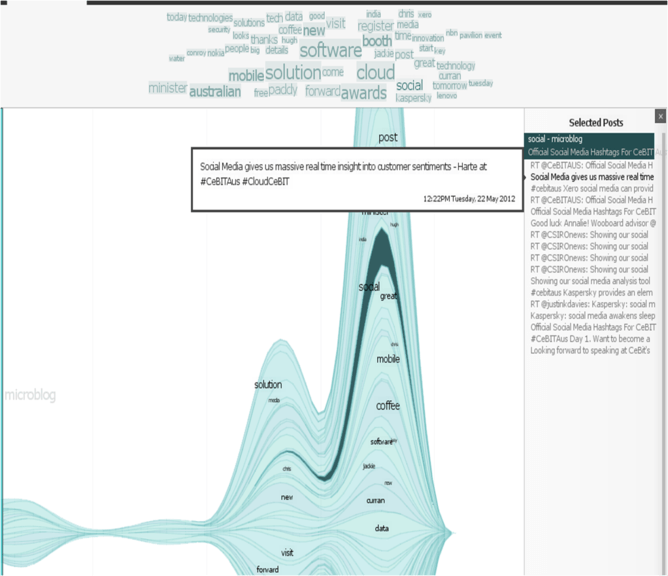Some websites can drive you crazy. Flickr/Jonathan Brodsky , CC BY
By Michael Kearney, CSIRO and Sarah Dods, CSIRO
How many times have you been looking for information online, only to find yourself going round and round in circles? Or you’ve spent too long poking around a website trying to find what you need, only to realise you’ve been looking in the wrong place all along?
Whether it is doing your banking, looking up details of a flight or checking out some government services – if a website doesn’t work the way we want it to, it can be very frustrating experience.
It might seem like a first-world problem but the reality is our expectations around service delivery are changing. More than three quarters of Australians prefer to access services electronically and we expect those services to be faster, adaptable and available whenever and wherever we desire.
This is why, more than ever before, service providers need to understand how people use their digital channels and make sure that their design is efficient, user-friendly and fit for the purpose.
Creating digital communities
It’s not only businesses that need to have a savvy online presence. Digital service delivery is increasingly relevant for the public sector. The Australian Public Service ICT strategy 2012 – 2015, states that digital technologies will be used to enable the delivery of better government services for the Australian people, communities and business.
Take the Australian Government’s Department of Human Services, which interacts with millions of Australians through services such as Medicare and Centrelink.
When managing payments worth more than a third of the federal government’s overall budget, small improvements to individual transactions can have a huge benefit. Customers being able to use self-service and online tools for some of their needs frees up valuable resources for cases where human interaction can make the most difference.
For the past five years CSIRO worked with the Department – under the Human Services Delivery Research Alliance which concluded in September – to develop a number of tools that are helping to transform service delivery for the digital era.
Connecting on social media
The Department is using our social media monitoring system, called Vizie, to support their social media management.
Vizie tracks, integrates and visualises information from a range of social media channels including Twitter, Facebook and Youtube, into a single, theme-based dashboard.
Vizie can generate streamgraph visualisations, like this one collected during CeBit. Using language processing and text analysis algorithms, it identifies what topics are being discussed in real time. CSIRO
Vizie can then help the department identify, from social media and in real time, when customers are experiencing problems using online and mobile services. This knowledge provides valuable feedback and supports quicker system responses.
As well as providing immediate insight into the major topics of the day, Vizie can also save organisations a lot of time that would otherwise be spent sifting through huge volumes of social media chatter.
More intuitive website experiences
The department is also using LATTE, a software platform that analyses the patterns in how people interact with websites.
It compares the sequence and duration of page visits to patterns that denote happy customers or user frustration through an inability to find the information they are looking for.
These patterns detect not only when, but where and why people encounter trouble with finding information, as well as the context of the session. It reveals insights into the organisation of pages and links, and the impact of word choice in search terms.
For example, LATTE might identify a pattern where users load four or five pages in succession before “abandoning ship” and jumping to a Google search instead. This indicates that they were not able to find what they were looking for within the website itself, either because it is hidden away or simply doesn’t exist.
The software can also identify problems with language usage, which can play a huge part in a website’s usability. This can often be the case when an organisation’s internal terminology or jargon doesn’t match up with everyday usage.
Internal search engines can also be a source of frustration if they don’t work effectively. LATTE can be used to identify patterns of user behaviour that show where searches are failing.
For example, users might conduct several searches, one after the other, still unable to find what they need. Or it might show that users have followed a link to a search result, only to then go round and round in circles.
LATTE identifies these mismatches between a user’s expectations of a website and the website itself – whether it be language, structure, the location of content or expected search terms.
By arming organisations with this information, they can make adjustments to the content, metadata and layout of their sites, in order to create a more user friendly and satisfying experience.
Protecting privacy and boosting productivity
While all this is happening behind the scenes, a user’s privacy is being protected. The software distills this data from standard log files captured on any web server, meaning there is no intrusive monitoring.
It’s the volume of data, not the identity of the user that’s important. LATTE reports data from aggregates of hundreds or thousands of visitors and identifies trends and patterns in behaviour that can inform decision making.
As the public sector seeks further efficiency dividends and people expect more from their digital services, government agencies are becoming more agile and responsive to change than ever before.
UK research shows that an online transaction costs a mere 1/100th of a face-to-face one so there’s clear savings to be made by agencies improving the online experience.
Perhaps one of the greatest impacts of the digital economy is that today almost anything can be measured – in fact we are drowning in data. So the old management adage “what gets measured gets managed” is turning inside out, to become “how do you measure to manage better?”
The challenge is identifying what data will be useful, and how it can be presented and managed itself to help improve a service to better meet customers’ needs without compromising their rights to privacy and informational security, and without overwhelming decision-makers.
Emerging technologies, such as LATTE and Vizie, are providing this evidence. The potential for these tools to be adopted by other organisations – both public and private – are almost limitless and we believe they are key to enabling services to be delivered faster and better in the digital age.
This will not only improve our productivity as a nation, but hopefully it will also eliminate those frustrating online experiences that leave you pounding the keyboard.
![]()
Michael Kearney works for CSIRO. CSIRO received funding from the Australian Government Department of Human Services under the Human Services Delivery Research Alliance. The software tools mentioned in this article were developed with support from the Alliance.
CSIRO received funding from the Department of Human Services under the Human Services Delivery Research Alliance. The Digital Economy Program receives funding from a range of government and industry partners. Sarah is also affiliated with the Australian Communication Consumer Action Network.
This article was originally published on The Conversation.
Read the original article.




25th January 2015 at 2:22 pm
Yes! Finally something about News Time Today.